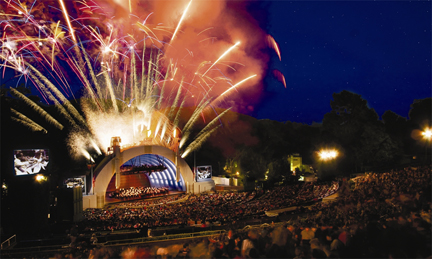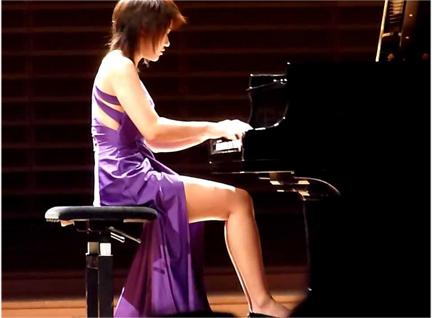By Robert D. Thomas
Music Critic
Southern California News Group
In my biweekly print column, which is now online (LINK), I noted that November is a very busy month for classical music. In addition to the three events I mentioned, here are some others that didn’t make the cut due to space or other reasons.
PACIFIC SYMPHONY TACKLES BRUCKNER’S EIGHTH ON NOV. 9, 10 AND 11
I’m sorry that due to my ongoing health issues I won’t be able to attend this concert, but you should make every effort to travel to Costa Mesa this weekend. Bruckner’s eighth is one of the pinnacles of the symphonic canon and it has taken Pacific Symphony Music Director Carl St.Clair more than 30 years before he felt ready to tackle this 90-minute work.
This is also the first PS program I can recall where the orchestra’s Writer-in-Residence, Timothy Mangan, has written so extensively about a program — this one is entitled “Cathedrals of Sound” — on the orchestra’s Blog.
In an interview (LINK) St.Clair notes that “I’ve wanted to conduct this piece for many years, but it’s like Mahler 9, it’s like all the pinnacle works, you have to build up to them. Not only does he, as a conductor, need to build up to Bruckner’s Eighth, but so do the musicians and the audience, he says. Accordingly, St.Clair has added an extra rehearsal for the orchestra. He’s also devised a prelude to the performance of the Eighth that he hopes will prepare the audience to hear the work.
“You can’t white knuckle it down the 5 or the 405 and every time you come to a stop you look at your phone, you text somebody, you send an Instagram, you answer the phone. You valet park, you run in, you slosh down a glass of white wine and you rush to your seat and then you hear the music of Anton Bruckner — it’s impossible,” he says.
Instead, writes Mangan, audience members will enter the Renée and Henry Segerstrom Concert Hall before the performance as Gregorian chant is sung from the stage by the Norbertine Fathers of St. Michael Abbey. Organist Christoph Bull will play organ music by Bach and Bruckner. Video artists Nick and Clemens Prokop will project visuals on three screens that evoke the interiors of the majestic St. Florian Monastery in Linz, where Bruckner served as organist and is buried. The lighting will be low.
All of this is to create a more cathedral-like atmosphere of calm and contemplation, “so that the audience can have an opportunity to receive the music appropriately,” St.Clair says.
In addition to this extensive interview, Mangan has a nice video feature (LINK) on the Wagner tuba, that odd-shaped instrument that Bruckner — a Wagnerian of the first order — used in his Symphony No. 8.Mangan uses cute clips from the Berlin Philharmonic’s horn section to illustrate.
Information: www.pacificsymphony.org. Also, make sure you read the music notes ahead of time — LINK.
CHARLES DUTOIT CONDUCTS LOS ANGELES PHILHARMONIC NOV. 9, 10 AND 11
Considering that he is now age 81, one can’t be sure how many more times we’ll have to see this Swiss-born conductor and he comes with a program of music by Maurice Ravel, one of the composers with which Dutoit made his international reputation at, among other places, the Montreal Symphony.
The program includes Ravel’s Pavane for a Dead Princess, the Piano Concerto in G Major, with Jean-Yves Thibaudet as soloist, and rarely heard one-act opera, L’heure espagnole.
Information: www.laphil.com
Incidentally, Dutoit and Thibaudet and London’s Royal Philharmonic Orchestra journey to Segerstrom Concert Hall on Jan. 25 for a program that includes Saint-Saëns Piano Concerto No. 5 (Egyptian). Information: www.philharmonicsociety.org
BTW: Ravel’s G-Major concerto also shows up on this weekend’s all-French programs at the San Diego Symphony. Louis Lortie is the soloist and Johannes Debus will be the evening’s guest conductor. On Nov. 10 and 11 at Copley Symphony Hall. Information: www.sandiegosymphony.org
LONG BEACH SYMPHONY SALUTES VETERANS ON NOV. 11
The orchestra’s new music director, Eckart Preu, picked an obvious date for this concert, which features a winning mixture of familiar and less-well-known pieces.
The former include Aaron Copland’s Fanfare for the Common Man and Samuel Barber’s Adagio for Strings.
The latter category is headlined by Symphony No. 2, Songs of New Race, by African-American composer William Grant Still.
Somewhere in the middle is a work that was once so well known as to be considered a war horse but now appears rarely on symphonic programs: Ferde Grofé’s Grand Canyon Suite.
Information: longbeachsymphony.org
________________________
(c) Copyright 2017, Robert D. Thomas. All rights reserved. Portions may be quoted with attribution.


